5.3 Functionality of a PO information system
5.3 Functionality of a PO information system
For the purposes of description, in the discussion below, tools are grouped according to their functionality and primary use and explained by way of screen shots from an idealized information system.[1] The purpose of using an idealized, instead of a real, system is to present the reader with a forward view, a vision of what could be, rather than to limit the discussion to the tools available today.
5.3.1 Portfolio management
The portfolio management tool group addresses the functionality required to plan and control the project portfolio (see Figures 5.2 through 5.6). It includes the following:
-
Master plan preparation;
-
Resource plan preparation;
-
Financial forecasting;
-
Risk-exposure calculations;
-
Multicriteria decision support;
-
Portfolio control.

Figure 5.2: Master and resource plans: The workload curve changes in response to the movement of the projects on top.

Figure 5.3: Capacity-versus-demand charts.

Figure 5.4: Project positioning chart (benefits versus cost).

Figure 5.5: Project risk exposure.

Figure 5.6: Portfolio tracking.
At this level, the tool or tools deal with projects and competencies. The workload and financial forecasts are based on templates or pre-established profiles and not on the detailed planning of tasks. Similarly, resource availability is established at the competence level and not for individual resources.
For the master plan, the resource plan, and the financial forecast, the tool must be able to group or display the data according to criteria such as the type of project (i.e., new platform development, product extension, research) and the degree of project commitment (i.e., whether the project is under execution, approved but not started, or only proposed). This functionality is critical when it comes to prioritizing or rearranging projects to satisfy resource or budget constraints.
Due to the uncertainties associated with long-term planning, it is imperative that the tool or tools used to implement this functionality allow for the probabilistic treatment of the quantities involved. A fundamental capability of these tools is the ability to deal with what-if scenarios and sensibility analyses.
The multicriteria decision support helps the decision makers to rank the projects according to different factors of merit, with the purpose of selecting those that contribute the most to the organizational goals.
For the control part of the portfolio management view, the forecasted completion date of the ongoing projects is contrasted with their planned duration in the master plan, and changes in the resource load and start date of related projects attributed to these differences are flagged. The overall status of individual projects is represented using a traffic-light schema, supplemented with drill-down capabilities to provide visibility into the issues or measurements from which the status is derived.
5.3.2 Task scheduling
This group of tools provides the functionality typically encountered in traditional planning tools augmented with workload and probability curves to help plan under resource or time constraints. The Gantt view (see Figure 5.7) is used to define and sequence work within a project, while the resource-allocation form allows the project manager to allocate or request generic resources (i.e., based on competence and location, rather than specific individuals) to work on specific tasks.
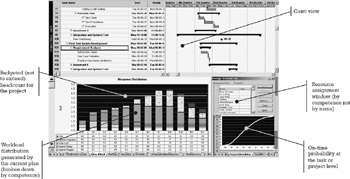
Figure 5.7: Project planning, Gantt view.
The workload chart, which allows the project manager to quickly visualize the amount of resources required to execute the plan, together with the probability chart, which shows the likelihood of completing a given task or project by a certain date, provides the project manager with the capability to interactively create a resource-constrained plan while making informed choices about the risk exposure associated with committing to a certain completion date.
5.3.3 Resource scheduling
This group provides the functionality required by line managers to efficiently utilize the resources under their supervision.
In contrast with the resource planning and allocation of generic resources done by project managers, this function deals with the day-to-day assignment of individual resources to specific tasks. For example, the resource manager will look at the requirements for resources generated by the project managers and assign specific individuals to do the work. To perform this task effectively and efficiently, the resource managers need to know the following:
-
Which tasks require assignment of resources;
-
The availability of each resource;
-
The resources at risk of not been released on time;
-
The task or tasks whose initiation is at risk as a consequence of overallocation or of resources not being released on time;
-
The aggregated workload for a given period.
The resource-allocation display (see Figure 5.8) allows the line manager to see at a glance: the request for resources, the tasks at risk, and the work that each resource has been allocated to, including indirect activities such as training or vacation.
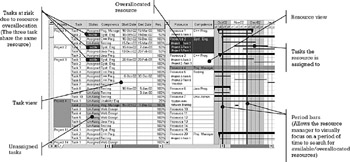
Figure 5.8: Resource allocation display.
5.3.4 Project tracking
Project tracking functionality is based on the control-panel [4] concept in which a central display presents all the information necessary to establish the health of the project and from which it is possible to drill down into different views to get more detailed information about a particular area or issue (see Figure 5.9).

Figure 5.9: Project tracking tool.
The project tracking system should not be limited to the reporting of past information, but ought to make extensive use of forecasting models to identify the early signs of a delay while there is still time to do something about it [5].
The use of "traffic lights" to bring attention to plan deviations is highly recommended; however, the coloring schema and the meaning of the lights should be used consistently throughout the system to prevent false alarms and misunderstandings. An example of a criterion for setting the red, yellow, and green indicator would be as follows: A red light is used to signal the existence of several indicators outside range or a strong variance in one of them. A yellow light signals mild deviations or isolated readings. A green light signals that the project is progressing according to the plan.
5.3.5 Document management
This functionality provides all project personnel, subject to security restrictions, with a central point for storing and retrieving project documentation.
Basic capabilities include browsing, classification, and content search. Typical documents stored or accessible through this function include plans, specifications, contact list, minutes of meetings, action items, process descriptions, change requests, correspondence, contracts, and presentations (see Figure 5.10).
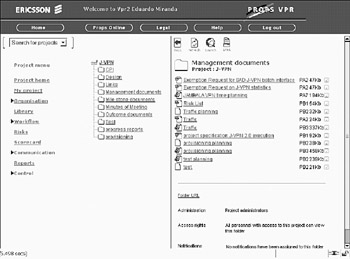
Figure 5.10: Sample document management tool: Ericsson's Virtual Project Room (VPR).
5.3.6 Risk management
The risk-management function helps project managers identify, prioritize, and communicate project risks using a structured approach.
This tool provides standard database functions for adding and deleting risks, together with specialized functions for identifying, prioritizing, and retiring project risks. Each risk can have a user-defined risk-mitigation plan and a log of historical events. Additionally, the risk-management tool provides automatic notification and escalation capabilities (see Figure 5.11).
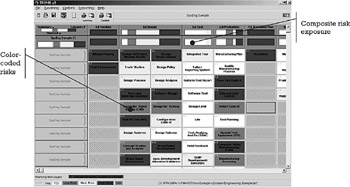
Figure 5.11: Sample risk-management tool: Technical Risk Identification and Mitigation System (TRIMS) risk panel developed by the U.S. Navy for its Best Manufacturing Practices program. TRIMS is based on proven risk models (such as those from the Software Engineering Institute), published practices, and the Navy's best-practices templates and can be applied to all phases of both military and commercial programs.
5.3.7 Finances and budgeting
The functionality of this group concerns the preparation of budgets, the tracking of expenses and revenues, the analysis of funding sources and destinations, the rate of expenditures, variances, cash flows, and cost and schedule performance indexes (CPI and SPI) for all project work. See Figures 5.12 and 5.13.

Figure 5.12: Organizational and work-breakdown structures in Performance Analyzer, a tool for the analysis of cost performance reports, cost/schedule status reports, and contract funds status.
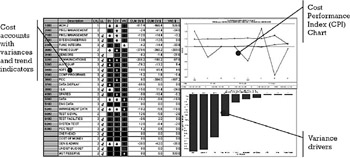
Figure 5.13: Performance Analyzer composite display showing financial performance.
At a minimum, these tools need to support the data structures necessary to roll up the data along project deliverable and organizational lines and provide baselining capabilities so that project performance can be evaluated against what was planned. A good tool would add to this basic functionality the capability of preparing and tracking activity-based budgets [6].
Typically, the tools will be required to deal with the following budget categories: direct labor costs, general and administrative expenses, material, equipment, travel, and management reserves. For large multinational organizations, the ability to deal with multiple currencies is also critical.
5.3.8 Action item management
This functionality is used by all members of the PO to raise and track issues that require a formal action or response by other members of the team or the organization. In addition to the normal database functions, this tool must provide automatic notification and escalation capabilities.
5.3.9 Time reporting
Capturing accurate and timely work data is essential in order to establish the true cost and status of a project. Traditionally within the realm of the finance organization and a nuisance to all workers, the time-reporting system plays a critical roll in the entire information system, since work hours are utilized either as raw material or a normalization factor by most of the metrics used in project management.
The time-reporting system should be linked to the project WBS, so that there is a correspondence between the work and the progress reported. Additionally, the system should be able to capture information about—for implementing activity-based costing—the type of activities in which the project staff is involved and—for implementing responsibility accounting— the functional area to which the employee belongs.
[1]Some of the tools shown have already been built and are in use at some divisions within Ericsson; others are mockups or composites of existing tools.
EAN: 2147483647
Pages: 81